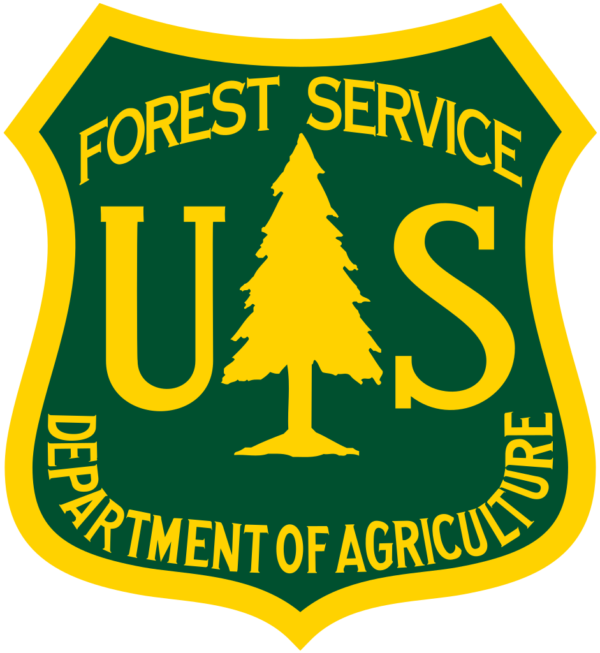
Overview
The Forest Service, in its's FY 2020 Budget Justification, describes itself as follows:
"The Forest Service is the recognized world leader in wildland fire management and incident command, providing training and support to State and local partners, and international entities in managing wildland fire."
And what it lacks in humility, it more than makes up for in size. No one fights more fire than the forest service. The Bureau of Land Management might manage more land, but they don't see as many fires. No one has more firefighters than the forest service. No one has more equipment either. They're the largest organization dedicated to fire suppression in the world. And over the two decades, fire suppression has increasingly taken over a larger and larger chunk of the pie for the Forest. When President Theodore Roosevelt created what we now know of as the US Forest Service in 1905, but was then referred to as the Bureau of Forestry, it was an attempt to better manage our natural resources. Logging had largely gone unregulated throughout much of the 19th century, and the environment had paid the price. While the forests would still be accessible to commercial activities like mining, logging, and cattle grazing, it was hoped that the Forest Service could manage these activities to preserve the land for future generations.
While firefighting has always been part of the Forest Service's mission, it's prominence and importance has risen over the last two decades. In 1995, fire suppression made up just 16% of the Forest Service budget. in 2015, it was responsible for 52% of its budget. And the concern is that by 2025 it will represent 67% of the budget.
Unfortunately, as fire seasons grow longer and more intense with each passing year, the costs rise. Which makes it a good time to get into the fire business. Each season, we're going to need more and more firefighters to handle these blazes. And the Forest Service has more opportunities than most. See how the Forest Service compares with other federal agencies.
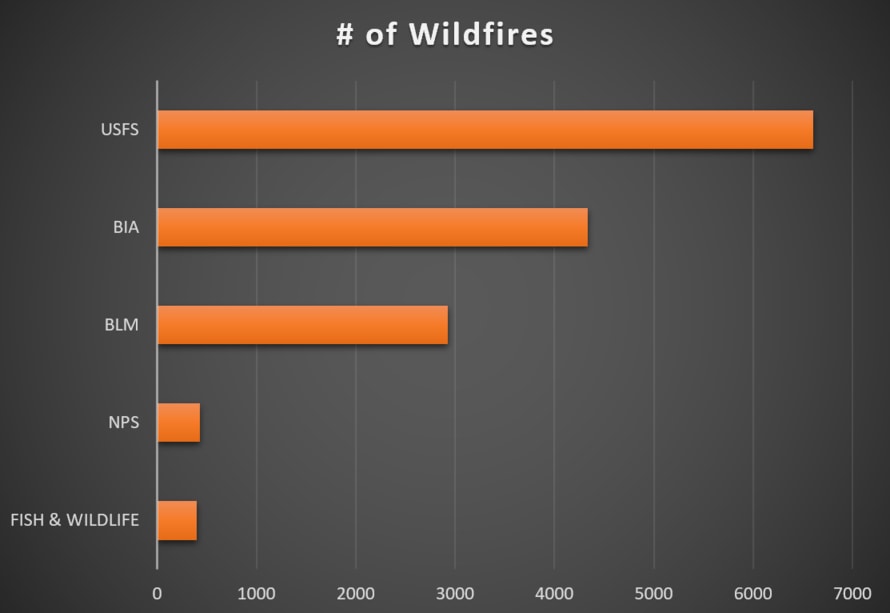
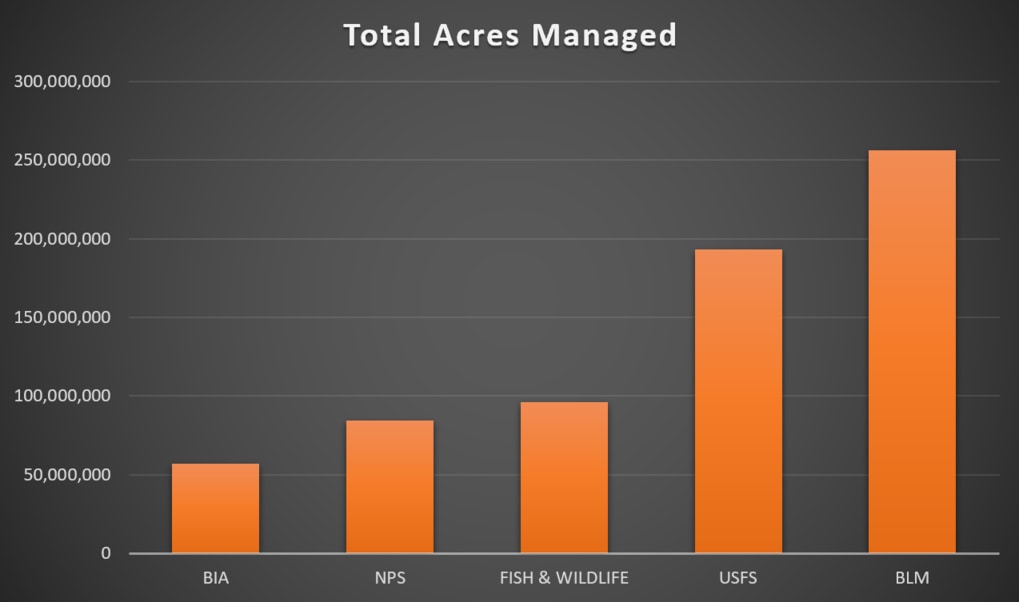
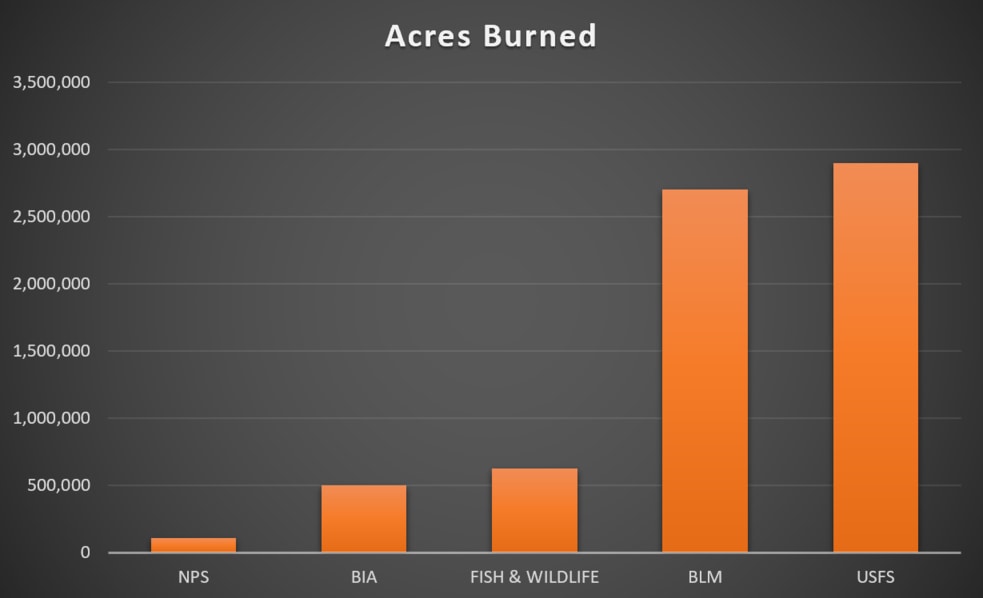
By the Numbers
Wonder how many Smokejumpers the Forest Service employs? How many hotshot crews it fields every season? Well here's what the organization looks like by the numbers.
Resource |
FS |
| Engines | 900 |
| Heavy Equipment - Dozers, Tractor Plow Units, Tenders | 210 |
| Helicopters | |
| Type 1 | 28 |
| Type 2 | 34 |
| Type 3 | 46 |
| Airtankers | |
| Next Generation Air Tankers | 13 |
| Scoopers | 0 |
| US Coast Guard Converted HC-130H Airtankers | 1 |
| Firefighters | 10,000 |
| IHC Crews | 67 |
| Other Firefighters | 7940 |
| Smokejumpers | 320 |
| Prevention Technicians | 400 |
Organization
Below, we'll break down how the Forest Service is structurally organized. At a high level, the organization divides itself geographically into Regions.
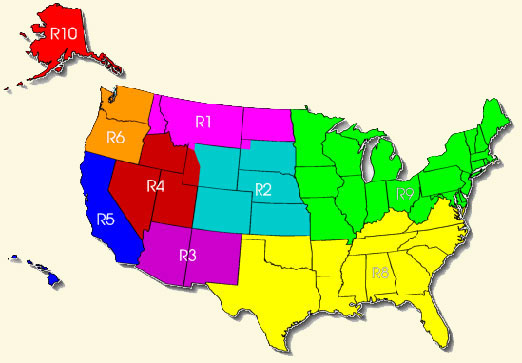
Fun Fact: There's no Region 7. Weird right? The old Region 7 was known as the "Eastern Region" and encompassed a large portion of the eastern US, including forests in Pennsylvania, New Hampshire and Virginia. During a re-alignment in 1965, the region as a formal entity was shuttered, and its lands were redistributed to Region 8 and Region 9. And there hasn't been a Region 7 since. You can learn more about the history of the regions on this Forest Service page.
Within each region, there will be 15-20 forests and grasslands. In total, the Forest Service oversees 154 National Forests and 20 National Grasslands. Those forests and grasslands make up nearly 200 million acres, approximately 25% of all the federally-managed land.
Each Forest will have a Supervisor's office (the SO), where the Forest Ranger and his or her staff is seated. The rest of the forest will be subdivided into ranger districts. And each ranger district will have a number of work stations. It is at these work stations that most firefighting resources are stationed. Some resources, like hotshot crews, or battalion chiefs or helitack personnel may also be stationed at the supervisor's office. Again, each forest is different.
Entry-Level Opportunities
The Forest Service offers one of the best opportunities for a candidate to start their fire career. This is due primarily to the sheer size of the organization, as well as its geographic presence. The Forest Service is everywhere.
Type 2 Crews
There are two variations of a Type 2 Hand Crew. A Type 2 Initial Attack (IA) Crew, and a standard Type 2 Hand Crew. Each crew will have between 18-20 members per NWCG guidelines. Some Type 2 crews are operational and active throughout the year. Others are organized as needed.
I started my career on a Type 2 Hand Crew, and I highly recommend it as a starting point for anyone interested in pursing a career in fire. What's the difference between the two crews? It comes down to fire experience. A Type 2 IA crew is required to have 60% or more of the crew with at least 1 year of fire experience. Whereas a non-IA Type 2 crew only requires 20% of its crew members to have 1 year of fire experience. So, there are 14 rookie spots available on an 18-person Type 2 hand crew. 16 spots available on a 20-person crew. However, those #'s decline fairly dramatically if you're looking at a Type 2 IA crew. Given the 60% requirement, there are 7 spots available on a 18-person IA crew, and 8 spots available on a 20-person IA crew.
Hotshot Crews
The FS has 67 hotshot crews. In order to remain compliant with NWCG standards, 80% of the crew must have at least 1 year of fire experience. Which means that each year, each crew can hire, at most, 4 rookies. So there are technically 268 rookie spots available across the 67 FS hotshot crews each year.
Engine Crews
With 900 engines in the FS's fleet, this presents the best area for an entry-level firefighter to break in. Now, it's a bit tough to determine precisely how many people are employed year over year on these engines because, depending on the type of engine, staffing levels might vary. For instance, a Type 3 Engine (the largest wildland fire engine) might have 5-7 firefighters assigned to it, while a smaller rig, like a Type 6 engine, might only have 4 or 5 firefighters assigned to it. Also included in this might be patrol rigs or prevention rigs, which might only be staffed by 1 or 2 firefighters. That being said, 3,600 is our best estimation based on the information available to us. Assuming that each engine could hire 1 - 2 rookies per year, you're looking at somewhere between 900 and 1,800 entry-level opportunities.
By the numbers alone, your best chance to get on with the FS for the fire season will be on an engine crew. There are simply more spots available than anywhere else.
Wildland Fire Modules
Of the 48 active wildland fire modules, 35 of those modules are Forest Service. And a wildland fire module can have between 7-10 crew members. Depending on the crew, between 4-7 of those roles could be designated for entry-level crew member. So, assuming all crews are maximally-staffed (10 crew members), there are 245 crew member positions available. Assuming minimal staffing (7 crew members), there are approximately 140 positions available. Obviously, the true number lies somewhere in between. And while there is not a specific requirement that crew members have previous fire experience, per NWCG guidelines on WFMs, it would be fair to assume that each crew would limit their hiring of rookies to 1 or 2 per crew per season. So assuming that is the case, there are as few as 35 entry-level positions available, or as many as 70 positions. Again, the true number is most likely somewhere in the middle.
Aviation Crews
No entry-level positions are available on a helitack crew. All helitack crews require at least one year of fire experience.
Resources